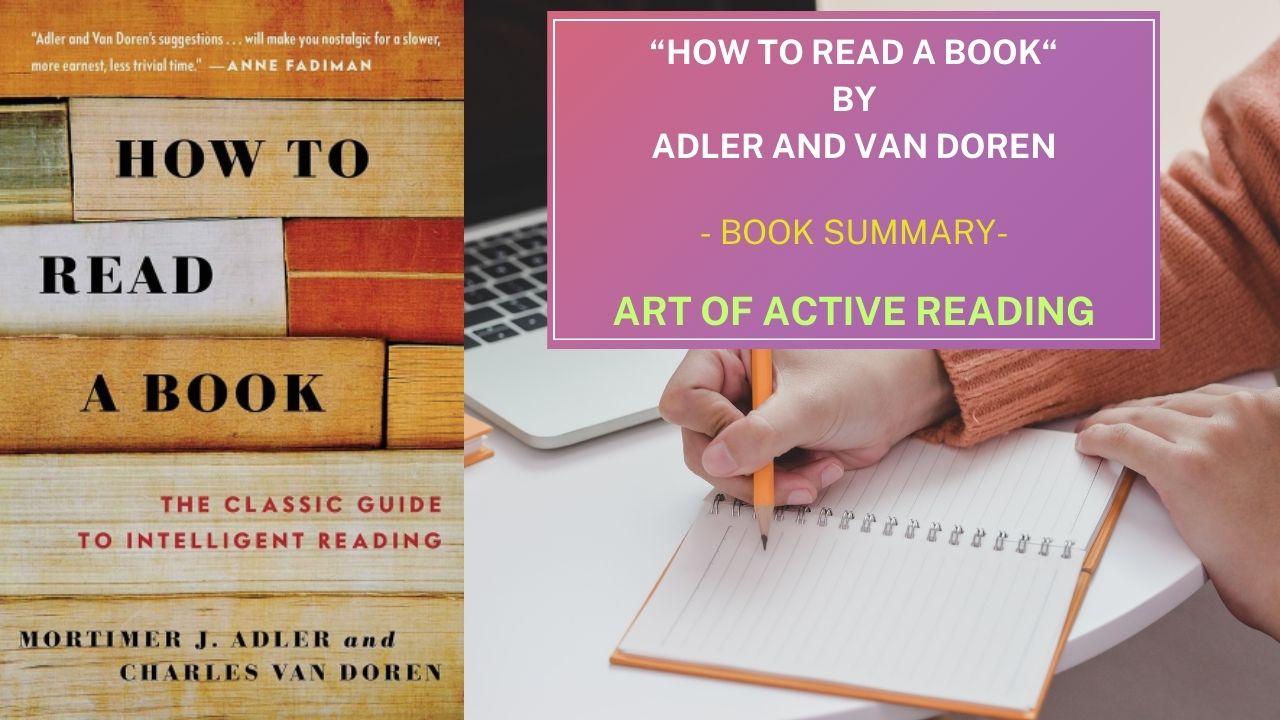“How to Read a Book” is a classic guide to effective reading written by Mortimer J. Adler and Charles Van Doren. The book, originally published in 1940, has since become a timeless resource for readers seeking to enhance their reading skills and get more out of their reading experiences.
The authors begin by emphasizing the importance of reading as an active and skillful process rather than a passive one. They argue that reading is not just about moving your eyes across the lines of a page but involves a series of intellectual activities that require discipline and effort. The ultimate goal of reading, according to Adler and Van Doren, is to gain understanding and extract meaning from the text.
The book introduces the concept of reading levels, distinguishing between elementary, inspectional, analytical, and syntopical reading. Each level represents a different approach to reading, with specific techniques tailored to extract varying depths of meaning from a text.
Elementary Reading: How to Read a Book
Elementary reading is the most basic level, where the goal is to grasp the fundamental ideas presented in a text. It involves understanding the author’s message at a surface level without delving into deeper interpretations. This level is essential for basic comprehension and is often the first step in the reading process.
Inspectional Reading: How to Read a Book
Inspectional reading is a more strategic approach that involves a quick survey of the book to get a sense of its overall structure and content. This level is particularly useful when dealing with time constraints or when deciding whether a book is worth a more in-depth read. The authors introduce two methods of inspectional reading: systematic skimming and superficial reading.
Analytical Reading: How to Read a Book
Analytical reading is a more detailed and comprehensive level of reading, where the reader seeks to understand the author’s arguments, assumptions, and evidence. This level requires active engagement with the text, asking questions, and critically evaluating the author’s ideas. The authors outline a series of questions to guide analytical reading, encouraging readers to interact with the material on a deeper level.
Syntopical Reading: How to Read a Book
Syntopical reading is the most advanced level, involving the comparison of multiple texts on the same subject. This level requires the reader to synthesize information from various sources and develop a comprehensive understanding of a particular topic. Syntopical reading is the culmination of the reading process, allowing readers to engage in meaningful intellectual conversations with the authors.
Throughout the book, Adler and Van Doren stress the importance of active reading, emphasizing that readers should be proactive in their approach to extracting meaning from a text. They provide practical advice on note-taking, annotation, and how to approach different types of literature, such as fiction, non-fiction, and practical books.
The authors also address the concept of reading speed, dispelling the myth that faster reading is always better. They argue that the pace of reading should be adjusted based on the nature of the material and the reader’s goals. Some texts require careful and slow reading, while others may be suitable for a faster pace.
Additionally, Adler and Van Doren discuss the role of a great book and the value of revisiting important works over time. They advocate for the idea that reading should be a lifelong pursuit, with readers continually expanding their intellectual horizons through exposure to a diverse range of texts.
In conclusion, “How to Read a Book” serves as a comprehensive guide for readers of all levels. Whether you’re a student, a professional, or an avid reader, the book offers valuable insights into the art of reading and provides practical tools to enhance your reading skills. By emphasizing the importance of active engagement and providing a systematic approach to different levels of reading, Adler and Van Doren empower readers to extract more meaning and understanding from the texts they encounter.
Other Good Reads:
Quick Learnings from one of the Bestsellers “Atomic Habits” by James
Quick Learnings from one of the Bestseller Self Help Book “The 7 Habits of Highly Effective People”
Building Lasting Connections: A Deep Dive into “How to Win Friends and Influence
